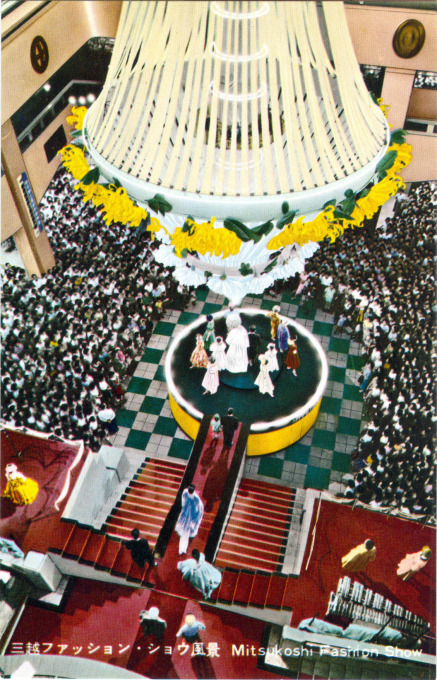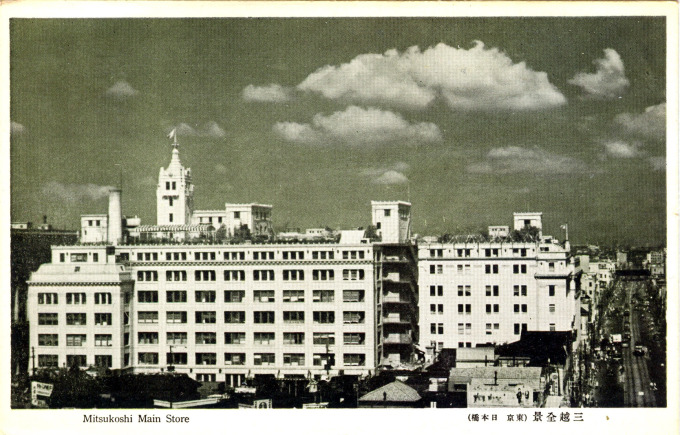See also:
Mitsukoshi Department Store, c. 1903-1923
Roof Garden, Mitsukoshi Department Store, c. 1930
The 1923 Great Kanto earthquake proved to be a turning point for the fortunes of Tokyo’s great department stores: Mitsukoshi, Shirokiya, Matsuya and Matsuzakaya. Japanese department stores originally appeared as a high-status, high-price, full-service retailer. Because many general retail stores were destroyed in the earthquake and resulting fire, the department stores were able fill the vacuum for everyday necessities. Doing so also allowed Mitsukoshi (and the other department stores) to expand its customer base beyond catering almost exclusively to the whims and fancies of the well-to-do, as had been the earlier business strategy.
Three years later (1926), with the rebuilding of the Nihonbashi flagship store completed, Mitsukoshi boasted 61 departments, including radio, wedding, shawls, furushiki wrapping cloth. By 1929, the flagship store had 89 departments.
Post-war Mitsukoshi included a theater, where bunraku puppet plays were performed. The Mitsukoshi Gekijo was converted from a modest-sized recital hall into a 542-seat playhouse, suitable for Kabuki and other genres.
In August 2007, it was announced that Mitsukoshi would merge into Isetan, another major department store in Japan, to become Japan’s largest department store group.
- Rooftop view. Mitsuskoshi department store, c. 1930.
- Mitsukoshi department store, elevated view, c. 1930.
- The new Mitsui Bank (foreground), and Mitsukoshi department store (part of the Mitsui zaibatsu), c. 1935.
- F. Aerial view of Mitsukoshi department store (left), Nihonbashi, c. 1940.
- Mitsukoshi department store, Nihonbashi, c. 1950.
- Mitsukoshi Department Store, aerial view, c. 1960.














Pingback: Mitsukoshi Department Store, c. 1903-1923. | Old Tokyo
Pingback: Isetan Department Store, Shinjuku, c. 1935. | Old Tokyo
Pingback: Roof Garden, Mitsukoshi Department Store, Tokyo, c. 1930. | Old Tokyo